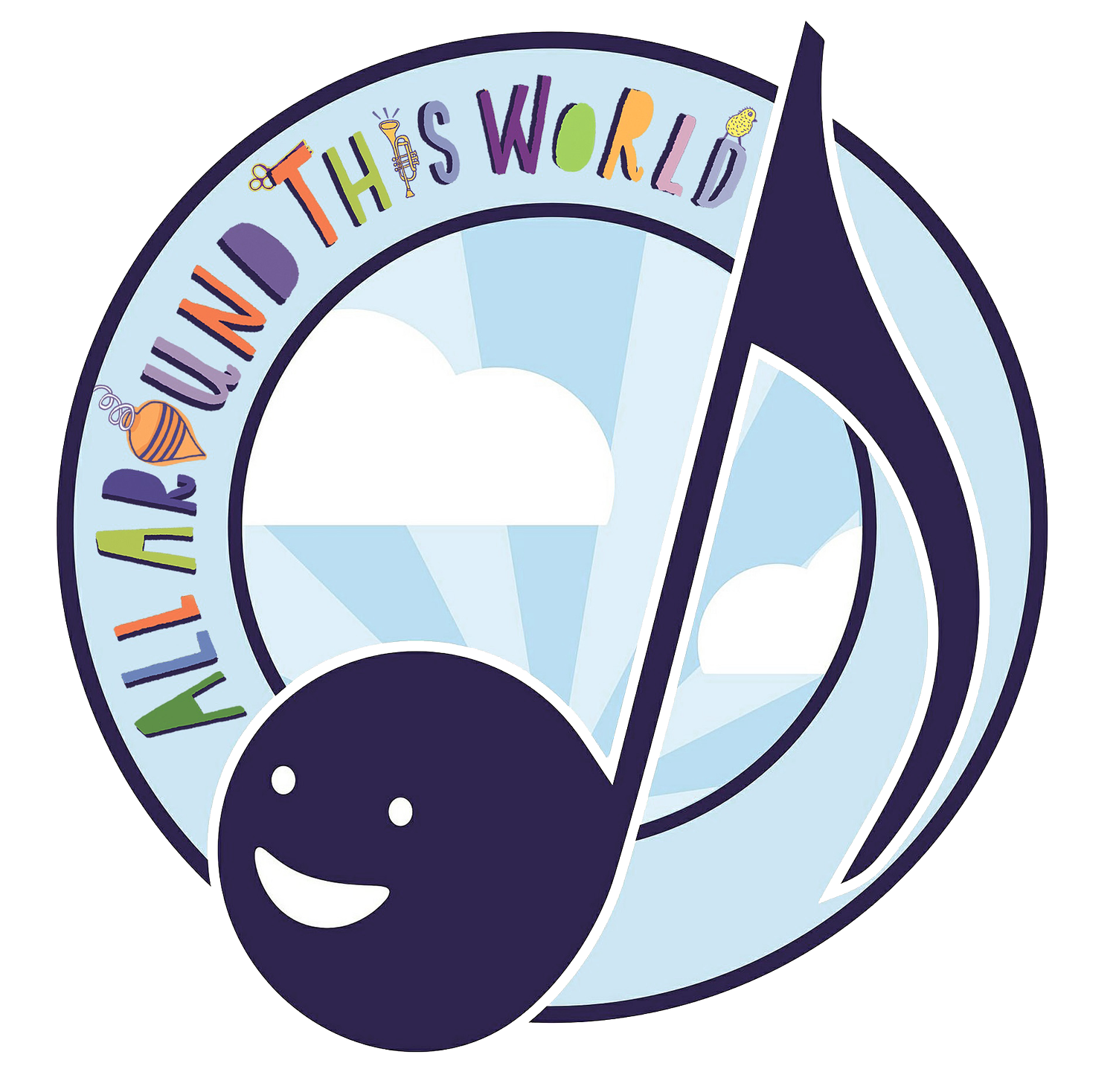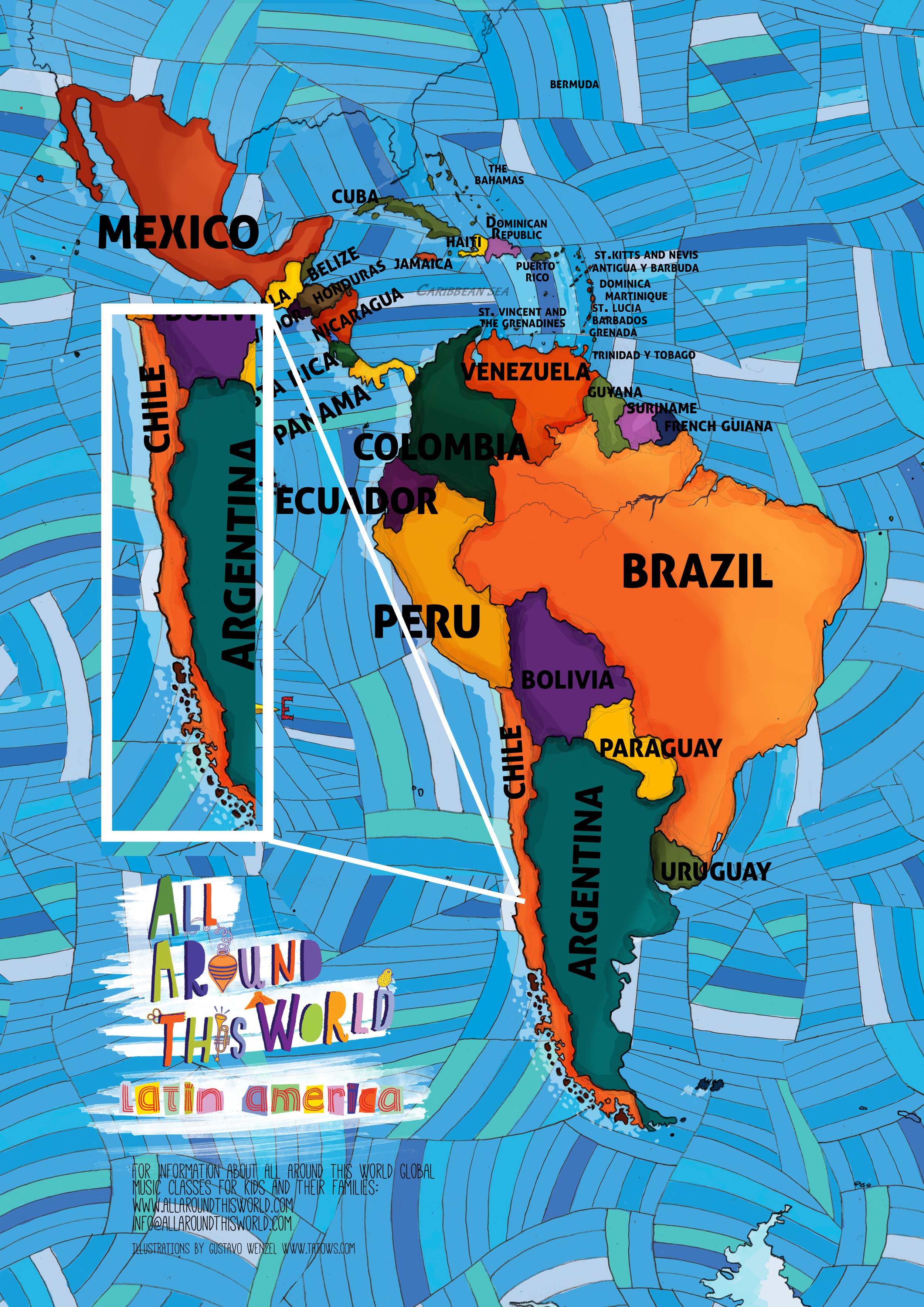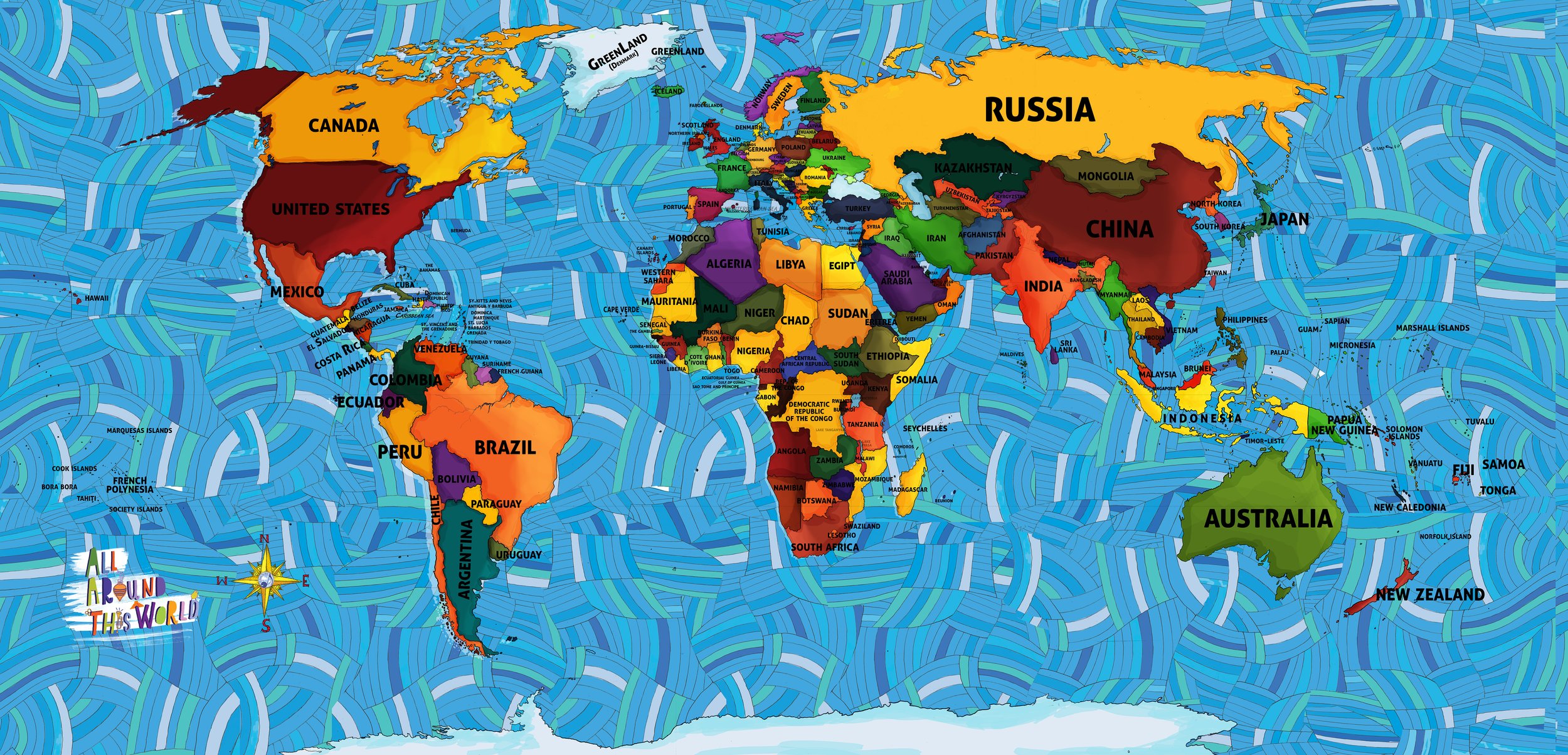LATIN AMERICA CHILE
In the mid-16th century when Spanish Conquistadors "discovered" the land we now know as Chile — a 4000 mile long, 100 mile wide strip of stunningly beautiful land that runs like a ribbon along half of South America’s western/Pacific coast — they also discovered tens of thousands other people who already lived there; the Mapuche other indigenous peoples fought them for the next two hundred years, but eventually Spanish language and culture dominated the land. By 1810, when Chile became independent from Spain, nearly 3/4 of its population of was of at least some European descent.
Today Chile is a strong democracy and one of the most economically and politically powerful nations in South America. Even so, as a massive 8.8 magnitude earthquake that hit Chile in February 2010 demonstrates, it literally sits on shaky ground.
The "national dance" of Chile is the Cueca, an exuberant mix of indigenous, African and Spanish influences, in which two dancers simulate the courtship of a rooster and chicken. Traditionally, male dancers usually wear a traditional Chilean cowboy costume, while female dancers traditionally don a flowered dresses with an apron. They dance, they prance, they fall in love.
IN CLASS WE…
EXPLORE LATIN AMERICA WITH…
-

-
DANCES, HOLIDAYS AND FUN!

-
THE AATW LATIN AMERICA CD

-
LATIN AMERICA "MUSICAL MAP"

ALL AROUND THIS WORLD’S SONGS AND LESSONS
Click on the map to meet any region of the world.



